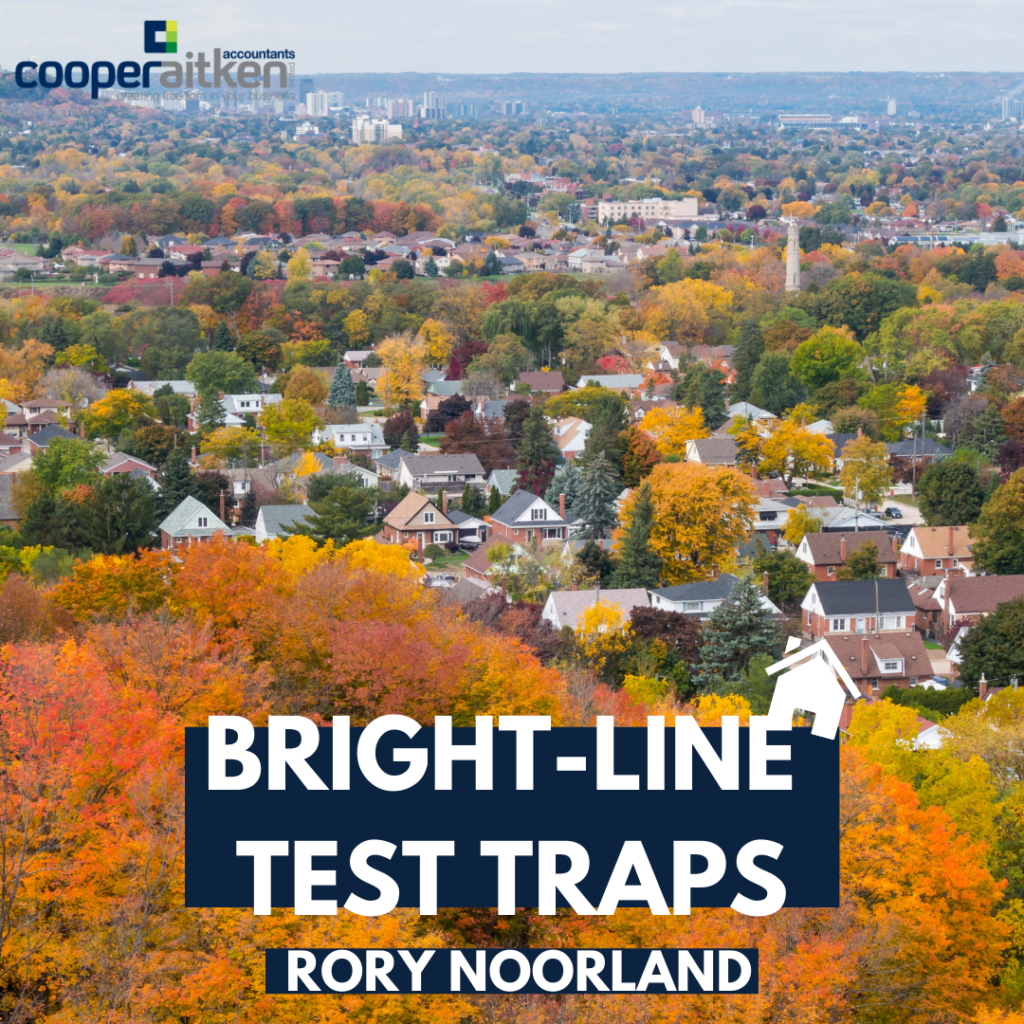In March of this year the Government extended the Bright-line test to 10 years, the effect of this extension creates what is essentially a capital gains tax on residential property that is unable to be exempted as a main home, a business premises or a farm. Although intended to target property investors it will have an impact beyond just investment properties. In particular, some lifestyle properties and holiday homes will likely become subject to tax if sold within a ten-year period and a gain is made.
There are now three situations in which the sale of a property can be caught under this test. Any gain made on sale will be taxable if;
- Purchased on or after 29 March 2018 and sold within 5 years
- Purchased on or after 27 March 2021 and sold within 10 years
- Purchased on or after 27 March 2021, it meets the new build investment criteria and sold within 5 years
The family home will continue to be exempt from the bright-line test and property transferred under a relationship property agreement or inherited will continue to be provided relief.
Also included in the changes was the inclusion of a change-of-use rule for the bright-line test. This means that if the property is not used as a main home for a period longer than 12 months it would be subject to tax for the proportion of time not used as a main home if sold within the bright line period and a gain is made. This will add significant complexity and require taxpayers to keep a track of the time that a property has not been used as a main home.
Some of the traps that we are seeing with such a long bright-line test period are as follows;
- The sale of bare sections within the bright line period cannot be excluded under the main home exemption. As a house has not been built on the property it cannot be considered a main home.
- Properties that are too large to be considered a lifestyle block but too small to be considered a farm can be captured if the property is not used predominantly for the enjoyment of the owners. For example where 5 Ha of a 6ha property is leased to the neighbour the main home exemption will not apply.
- Second homes or holiday homes are not able to be exempted under the main home exemption.
- Properties jointly owned by parents and their children are being caught as the parents are unable to apply the main home exemption if the children purchase the remainder of the property off them.
- Restructuring will often reset the bright-line test period and can result in properties being brought into the bright-line test that we previously outside of it.
There are a few other points to note;
- Any sale of a property between associated or related parties will be deemed to occur at market value.
- The end date for the test is the date of signing an agreement for sale which is in contrast to the start date which is the date of title transfer.
- Transferring more than 50% of the shares in a company that owns a property will trigger the bright-line test. Note a company cannot apply the main home exemption.
- Changing to or from a Look Through Company status will also trigger the bright-line test as it is considered a deemed sale and acquisition of all property owned by that company.
- A person can only have one main home, however spouses may have different main homes depending on living arrangements.
- A trust can apply the main home exemption based on the property that the main settlor resides in as their main home. A beneficiary solely living in the property cannot apply the main home exemption unless they are also the main settlor of the trust.
- It has been clarified that serviced apartments are captured by the bright-line test and not excluded as business premises. This also impacts residential houses being solely rented on air bnb etc.
Finally it is worth noting that the bright-line test, which can only be described as a capital gains tax, has now become far more onerous than any capital gains tax previously proposed. With the introduction of the 39% tax rate on personal income over $180,000 per annum there is a risk where property is owned by taxpayers in their personal names that this rate could apply. This should be contrasted with the capital gains tax that was proposed during the 2017 election by Labour that had a rate of 15%.
As you can see the bright-line test, originally quite simple, has now become both complex and potentially onerous. We would recommend that you discuss any property transactions with us prior to signing any agreement so that you are aware of the implications of doing so.

Rory Noorland
Director and Chartered Accountant
P: 07 889 7153
E: rory@cooperaitken.co.nz




